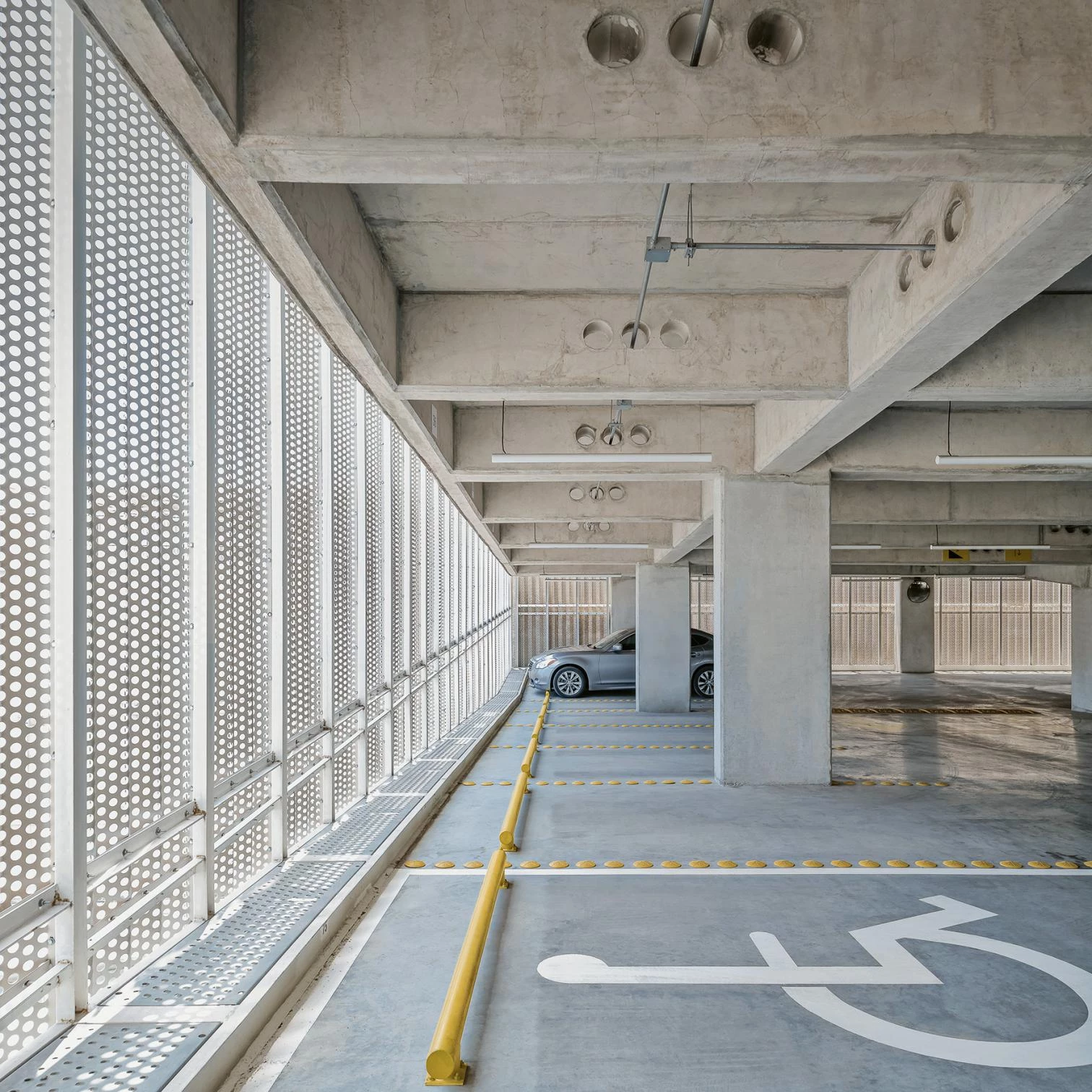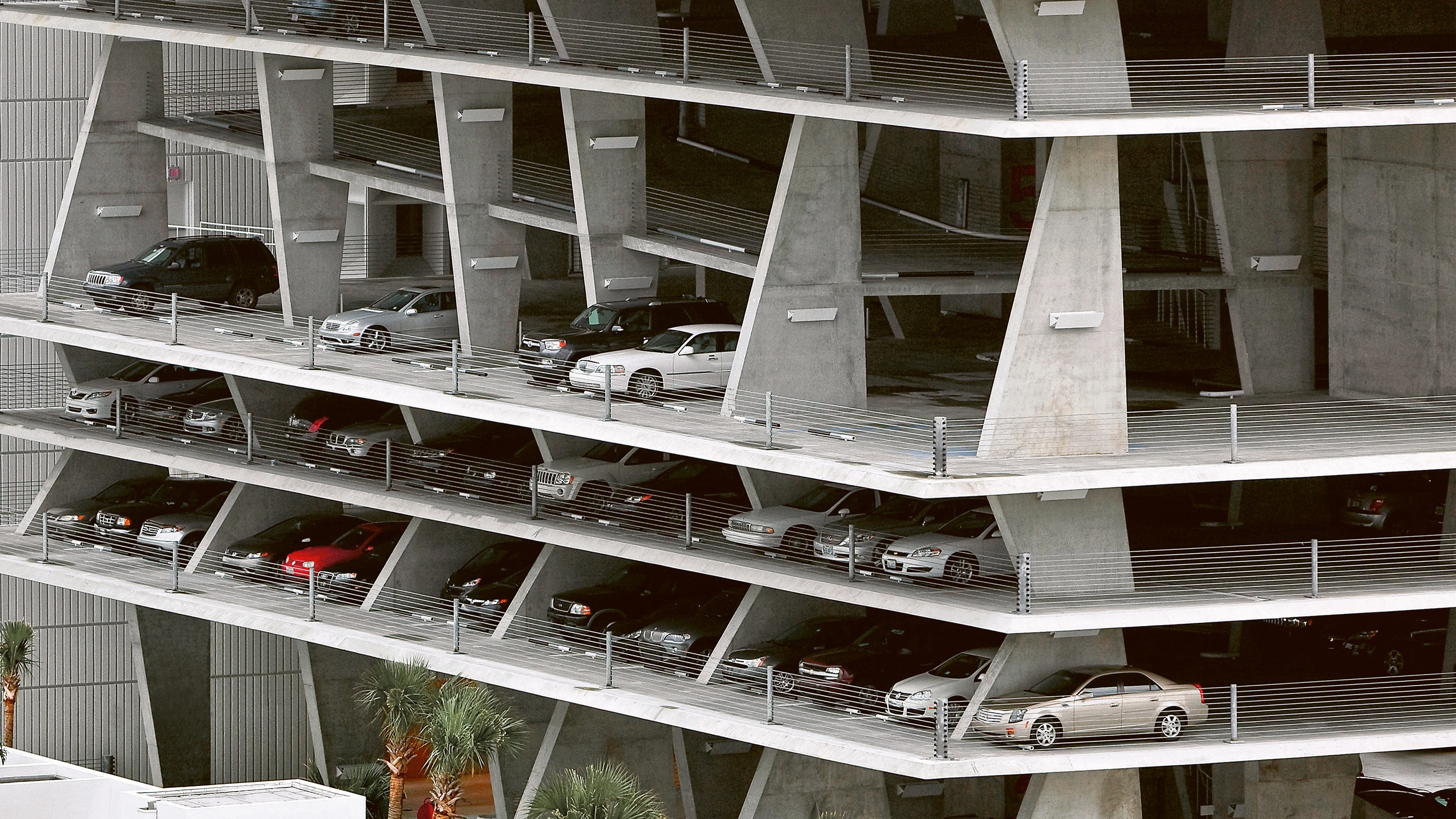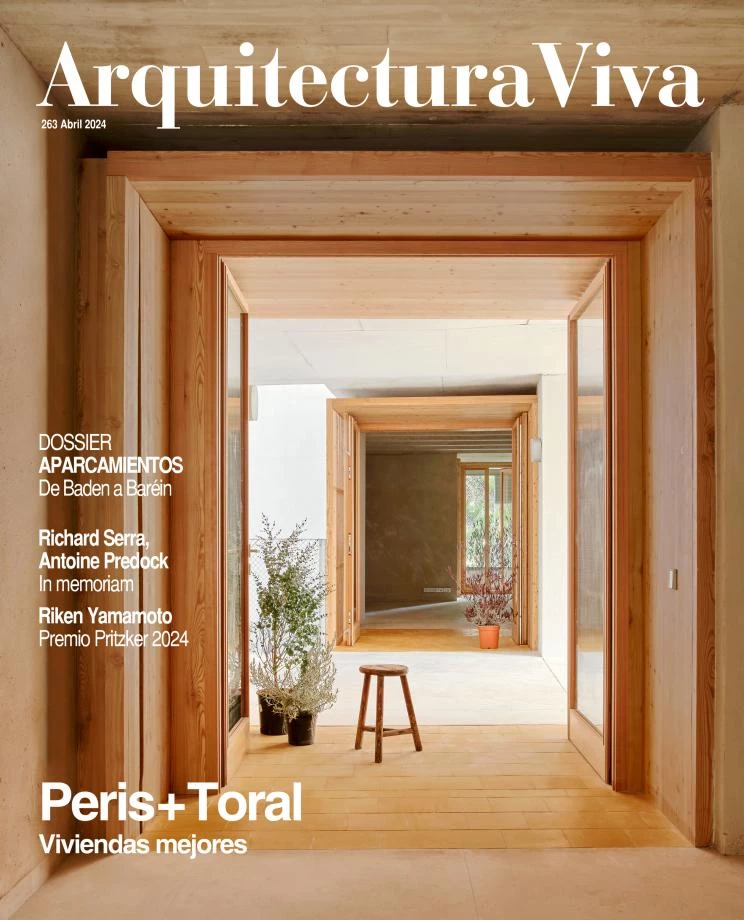Continuous Movement
Two Contemporary Car Parks

Herzog & de Meuron, 1111 Lincoln Road, Miami Beach (United States)
The relationship between cars and buildings is manifested in at least three ways. The first, metaphorical, is part of architecture’s broader link with machines, and holds that buildings should draw from the same principles of rational efficiency which are applied to automobiles: the house as a machine à habiter, using the term of the same Le Corbusier who compared the Parthenon to a racing car. The second, related to the first, furthers the parallelism between vehicles and buildings through the hope that the latter can eventually be manufactured like the former, in the conviction that they belong, or ought to belong, to one same industrial ecosystem. The third, which could be seen as the simplest on an intellectual level but also as the most probable, is the one that comes about when architecture gives shelter to automobiles in garages, those places of industrial modernity where cars double as machines inhabiting the machine à habiter.
Garages are architectures that are almost always ordinary and which colonize the bottoms of buildings and the underneath of streets. Although their presence and importance in everyday life is undeniable, and though they have not ceased to figure in the imagery of the city that movies have done much to forge, parking facilities have been explored as construction types beyond their basic purpose as containers. Nevertheless, there have been some avant-garde cases which the well-informed reader will certainly remember: from the garage and racetrack of the Fiat Lingotto Factory in Turin (1923), a fruit of Giacomo Mattè Trucco’s futuristic vision, to Herzog & de Meuron’s elevated parking structure located at 1111 Lincoln Road in Miami (2010), a veritable landscaping milestone, not to mention the so-called ‘Projet de garage pour Paris’ (1925), where in the name of efficiency Konstantin Melnikov poetically explored continuous motion, or the no less futuristic project which the same Melnikov was able to carry out years later in Moscow (1934) for the Soviet transport agency Intourist.
It is in this experimental tradition, which avoids banality to make the car experience a motive for architectural quality, that we can place the highly diverse buildings selected to be featured in the following pages. The garage by MONO Architekten in the German town of Neuenburg am Rhein renounces any tinge of futurism or technological bombast to instead insert itself with ease and calm in a historical and natural setting, and manages to engage in dialogue with its two companions on the premises, a lookout-tower and a square. For their part, the four parking facilities built by Christian Kerez in Muharraq echo the futuristic tradition and folds of Möbius, Deleuze, and Koolhaas whilst exploring the poetry of movement on the ramps and the stripped aesthetic of concrete.[+]

FRPO Rodríguez & Oriol, San José Station, Toluca (Mexico)






